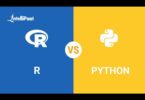With the rise of platforms such as Instagram and TikTok, the social media landscape has become increasingly visually oriented. Users frequently communicate exclusively with shared photographs, emojis, and GIFs. This visual language is full of valuable information for brands trying to understand and reach consumers using social media analytics, but it requires a different approach than analyzing text. Image analysis, an AI-based technology that analyzes images to discern the meaning of visual content, is an ideal social listening tool for brands to utilize in this visual environment.
What Is Image Analysis?
In the context of consumer research, image analysis involves applying AI techniques to analyze images posted on social media and other online platforms, including photographs, emojis, and GIFs. Image analysis can also be applied to other rich media formats such as YouTube or TikTok videos.
The goal is often to determine the emotional content, the consumer sentiment, underlying visual content posted online. Image analysis tools such as NetBase Quid AI can gather and analyze large data sets with brand-relevant images, including logos and products, and determine whether the posts have positive or negative sentiment, and whether that sentiment is strongly expressed.
Applications of Image Analysis
There are several applications of image analysis for consumer research. A company might use image analysis to identify new potential customers, understand and connect with those who are especially loyal to the brand, or perform a competitor analysis.
Identifying new customers: Image analysis tools can organize data gathered from social media posts based on audience segments. These tools analyze the emotional content of images, then group the data gathered according to the demographic characteristics of consumers, such as age or gender, or according to shared interests, such as sports or music.
For example, using image analysis, a brand could determine that their product tended to be featured in photographs from sporting events, even if the brand was usually not tagged in these posts. If it turned out that users who included images of a brand’s logo or products in positive posts tended to be sports fans, then the brand might consider pursuing partnerships and marketing campaigns that appealed to sports fans, targeting a new audience that shares its current audience’s interests in sports.
Connecting with loyal customers: Even customers who love a brand might not always tag that brand in their posts. Most social media users will not tag a brand even if the post is positive about its products. But this is valuable information for companies looking to build on successes by understanding who is most passionate about their brand. NetBase Quid AI can provide brands with Net Sentiment ratings of content assessed via image analysis. These ratings range from -100 to 100 and track both how positive or negative the post is, and how strongly that emotion was expressed. A brand looking to study its strengths can analyze and build on an understanding of posts and audience segments with higher Net Sentiment scores.
Performing a competitor analysis: Just as a company can use image analysis to better understand how its own brands and products are appearing in visual content on social media, it can apply image analysis to understand the visual representation of its competitors. Better understanding the visual contexts in which a competing brand appears in a favorable light and the contexts in which it does not can help a company target gaps its competitors are missing, and address weak spots where a competitor has an edge.
These are just three of the many applications of image analysis for consumer research; there are many more, and as the technology continues to evolve, new capabilities are sure to emerge. For brands that understand the importance of visual communication online, image analysis is an essential tool for building brand loyalty and connecting with new customers.








Leave a Comment
You must be logged in to post a comment.